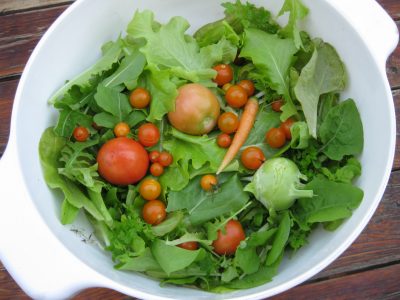How can we fend off insects from our trees?
First, let’s backtrack to fall 2010 when our friend Bob Harper sent us leaves from his red oak tree. As we reported then, these are leaves that were skeletonized by feeding insects. At that point, it was too late to do anything since the insects were long gone, so pesticides would have been completely useless. We advised Bob to keep the tree healthy, because it would grow new leaves the next spring, if it wasn’t stressed by other factors.
Recently, Bob’s neighbor Richard sent us pictures of the tree, now back to full health! To fend off damaging insects, this is the time of year that we can spray horticultural oil on fruit trees, as a necessary preventative, or other trees that have had problems, to naturally control overwintering insects, especially in their egg, larvae and nymph stages.
Horticultural oils, also known as dormant oils, because they should only be used when plants are dormant, can also control many fungal pathogens by blocking their access to tender plant tissues, where they can easily invade. It’s really a good idea to keep an eye out for pathogenic cycles. While some trees and shrubs are continually invaded by the same pests year after year, other pest cycles are only a problem on occasion, and so wouldn’t warrant much attention on an annual basis.
An example would be live oak trees and insect galls. Galls may be very prevalent on your live oak in some years, but the very next year you may have none. And anyway, these galls are not really susceptible to insecticides, and usually don’t cause enough damage to warrant any sort of treatment.

 Cecilia Neuhaus
Cecilia Neuhaus Jim Kamas
Jim Kamas Daphne Richards
Daphne Richards
 Steve Kainer
Steve Kainer